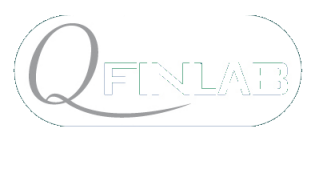FINANCIAL ENGINEERING (Master Level, Mathematical Engineering)
Prof. Roberto Baviera in collaboration with Laura Locatelli (Unicredit), Alessandro Montinari (Mediobanca) & Giona Soldati (Banor) and also Michele Domenico Massaria (PoliMi).
Main obiectives and contents
From theory to practice in finance with a case-study approach:
1. Credit Risk: single-name and multi-name products;
2. Quantitative Risk Management (RM): from RM Measures to RM Techniques;
3. Structured products: calibration, valuation and some hedging issues.
Suggestions by previous year students (before starting the course) can be found below. Pls check also for course prerequisites. For a glimpse into the course, check out one of the last editions of the Best Pitch Award.
Description of main arguments
0. Basic derivatives’ concepts
- Forward & option: Exchange-traded Markets vs OTC markets, Forward vs Futures. Forward Price: deduction via a no-arbitrage argument. European Option (Call/Put): decomposition in Intrinsic Value & Time Value; Put Call Parity. CRR & Black Model and examples. Monte-Carlo technique.
- Main Greeks: Delta, Gamma, Vega e Theta. Volatility Smile.
- Basic Interest Rate (IR) instruments: Fundamental Year-fractions in IR Derivatives. Depos, FRA, STIR Futures, Interest Rate Swaps & Fwd Swap, Cap/Floor, Swaptions.
- IR bootstrap. Sensitivities: BPV, DV01 and duration. Sensitivity analysis and hedging of IR risk with IRS.
1. Credit Risk
- Introduction to credit risk.
- Basic Fixed Income instruments in presence of Credit Risk: Fixed Coupon Bond, Floater Coupon Bond, Asset Swap, CDS. SPOL, CDS, ASW relations. Bootstrap Credit Curve.
- Firm-value (Merton, KMV calibration, Black-Cox) & Intensity models (Jarrow-Turnbull, inhomogeneous Poisson).
- Multiname products (ABS, MBS, CDO) and models for HP and LHP.
- Copula approach and Li model with examples (Archimedean and Gaussian Copulas), CDO Implied Correlation.
2. Quantitative Risk Management
- Basel Accords, Risk Management Policy.
- VaR/Expected Shortfall (ES): Variance-Covariance method, Historical Simulation, Weighted Historical Simulation, Bootstrap, Full valuation Monte-Carlo, Delta-normal & Delta Gamma method, plausibility check and Scaling rule. Coherent measures: assioms, VaR subadditivity (counterexample, elliptic case), ES coherence.
- Backtest VaR: Basel approach, unconditional & conditional backtest.
- Capital Allocation: Euler Principle & Contribution to VaR & ES.
3. Structured products
- Certificates, Equity and IR Structured bond: the general Monte-Carlo approach for pricing not-callable structured products. Callable & Autocallable products.
- Deal structuring and Issuer hedging.
- Digital Risk: Slope impact & Black Correction in Autocallable products, FFT technique. Lewis formula for option pricing and analytic strip via an example: Exponential Levy model and characteristic function (NIG & VG). Global calibration and pricing via a Monte-Carlo (NIG). Sticky Strike & Sticky Delta. Parsimony and smile symmetry.
- IR products and models: plain vanilla and exotics. HJM models: Main equation under Risk Neutral measure; equivalence with a ZC bond approach. Fundamental Lemmas and examples:
o Market models: BMM, LMM and SMM. Calibration: Flat Vol vs Spot Vol in Cap/Floor markets.
o Hull White model (Extended Vasicek): Cap/Floor & Swaption solution. Calibration. Pricing: Trinomial Tree.
Course Prerequisites
Mathematical Finance II, Stochastic Differential Equations, proficiency in Matlab/basic knowledge in Python
More in detail:
– Arbitrage Pricing Theory
– Forwards, Futures, Call/Put European and American Options. Physical delivery & Cash settlement
– CRR and Tree pricing approach
– Fixed Coupon Bonds, Floaters and their sensitivities (e.g. duration), caplet/floorlet and swaption
– Filtration, Stochastic Ito Calculus, change of measure and Girsanov Theorem, Stochastic Fubini-Tonelli theorem
– Integration rules in the complex plain
– Proficiency in Matlab (it’s also suggested a basic knowledge in Python)
Course organization
– Written & oral examination
– The 10 CFU version uses some “Innovative teaching methods” designed in collaboration with the financial industry.
This version could end also with a final project; starting from the AY 2019-2020 the best pitch has been awarded. Also a second, a third edition and a forth edition of the Best Pitch Award has been conferred for the AY 2020-2021, AY 2021-2022, AY 2022-2023 and AY 2023-2024. Last but not least, it has been followed by a sixth edition for the AY 2024-2025.
Suggestions (and answers to some FAQs) by previous year students: “Should I choose FE?”
… and do not hesitate to contact previous years’ students for any further question and/or clarification!
Textbooks
1. J. Hull (2009), Options, futures and other derivatives, Pearson Prentice Hall, 7th Ed.
2. A.J. McNeil, R. Frey, P. Embrects (2005), Quantitative RM: concepts, techniques and tools, Princeton Univ. Press
3. P.J. Schonbucher (2003), Credit Derivatives Pricing Models, Wiley

